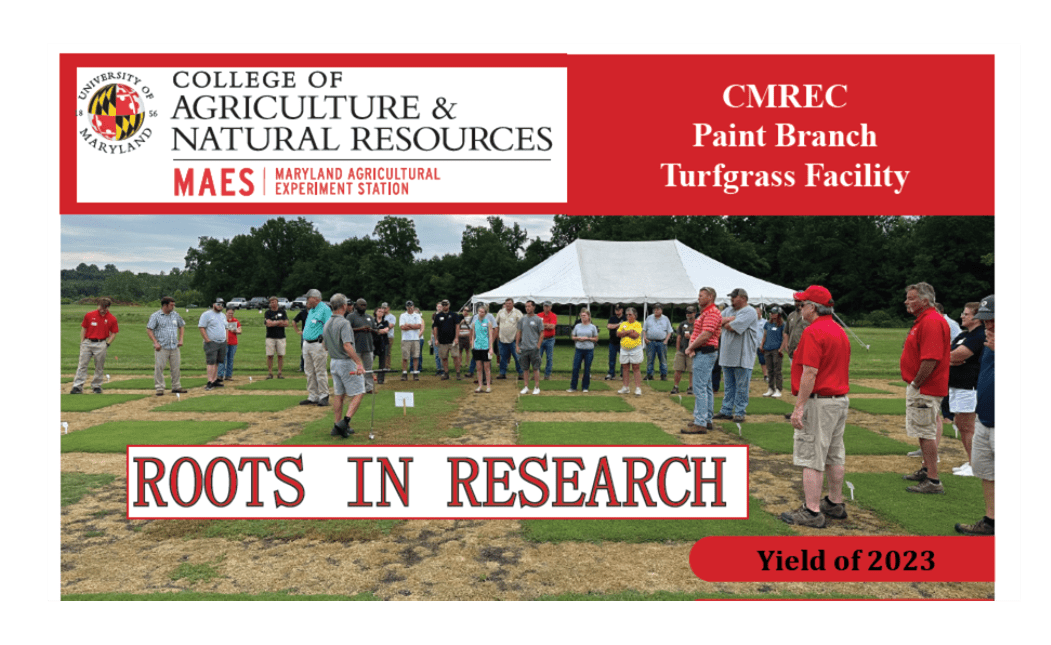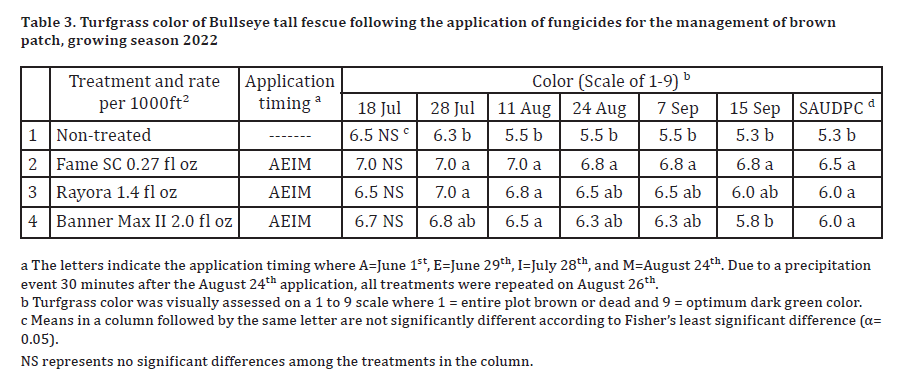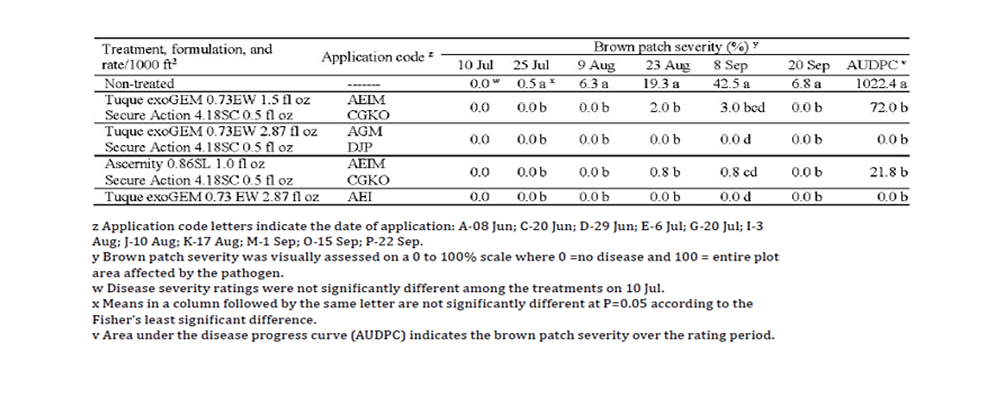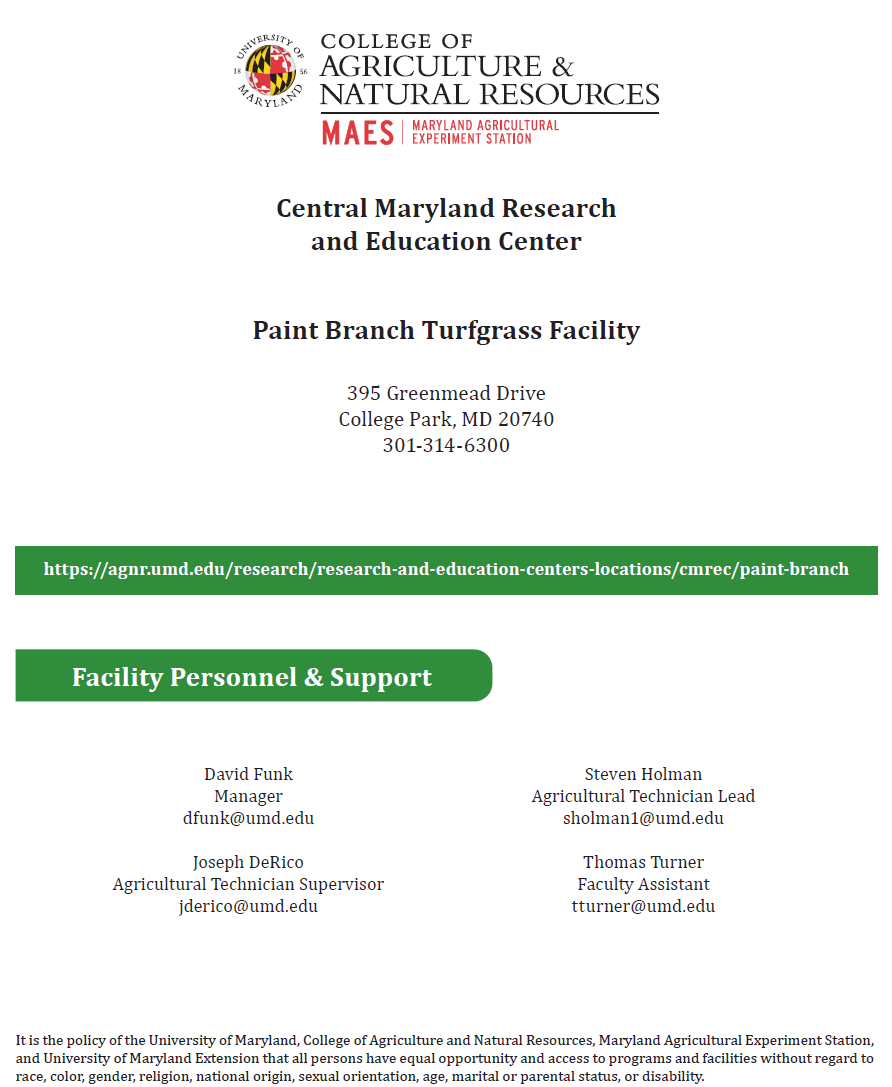Efficacy of Preventative Fungicides for the Management of Brown Patch on Home Lawn Tall Fescue
F. Shahoveisi, T. Lai, Department of Plant Sciences and Landscape Architecture, University of Maryland
The efficacy of two experimental fungicides, three commercially available fungicides and an experimental biofungicide were assessed for brown patch control on tall fescue (‘Bullseye’) planted on native silt loam soil in 2021. The study was conducted at the University of Maryland Turfgrass Research Facility in College Park, Maryland. The turfgrass was mowed twice weekly to maintain a height of 3 inches. Depending on the treatment, fungicides were applied approximately every 14, 21, or 28 days from 22 Jun to 1 Sep. Experimental plots were 3 ft by 6 ft and arranged in a randomized complete block design with four replications. For the suspension concentrate (SC) formulations and biofungicide applications, a CO2 backpack sprayer at 40 psi equipped with a single Teejet AI9508E nozzle was used to dispense fungicides in a water volume equivalent to 2 gallons per 1000 ft². Granular formulations were dispersed evenly with a shaker bottle and irrigated with 0.1-inch water after each application. Plots were fertilized with urea (46-0-0) at 0.9 lbs/1000 ft² rate on 27 Apr. For weed management, Dithiopyr L (0.36 fl oz/1000 ft2 on 11 Apr) and Sedgehammer (0.9 g/1000 ft2 on 13 Jul) were applied. Brown patch severity was visually assessed as the percentage of symptomatic area per plot biweekly between 10 Jul and 8 Sep. The area under the disease progress curve (AUDPC) was calculated using the following formula: Σ [[(yi+ yi+1)/2] [ti+1 - ti]], where yi and yi+1 represent disease rating at two consecutive dates, ti, and ti+1 represent the corresponding rating dates to yi and yi+1, respectively. Disease severity data were subjected to analysiTs of variance and means separation using Fisher’s least significant difference (LSD) procedure at α= 0.05.
The initial symptoms of brown patch were noted on 10 Jul and the disease severity increased throughout the study until late August. Plots treated with Exp-UMD-BP-TF1 had significantly lower disease severity than the non-treated control on most rating dates except on 23 Aug. Plots treated with Exp-UMD-BP-TF2, Headway G, alternating Exp-PK-1 and Fame SC, and Fame SC alone had significantly lower disease severity than the non-treated control throughout the study period. Plots treated with Fame G had higher brown patch severity than all other treated plots on 25 Jul and the two August rating dates. Disease severity was lower in plots treated with Headway G, an alternation of Exp-PK-1 and Fame SC, and Fame SC alone compared to other treated plots during August rating dates. Brown patch AUDPC values in plots treated with Headway G, an alternation of PK-1 and Fame SC, and Fame SC were significantly lower than other treatments and the non-treated control. Further, AUDPC values of Fame G treated plots were not significantly different than the non-treated control. No phytotoxicity was observed during this trial.

______________________________________________________________________________________________________________







